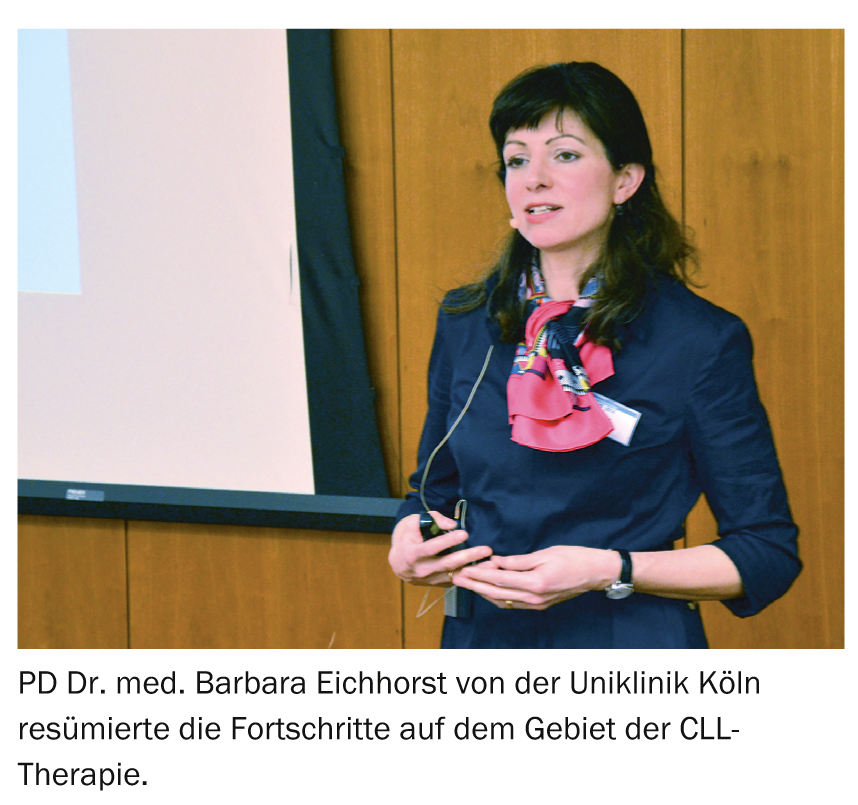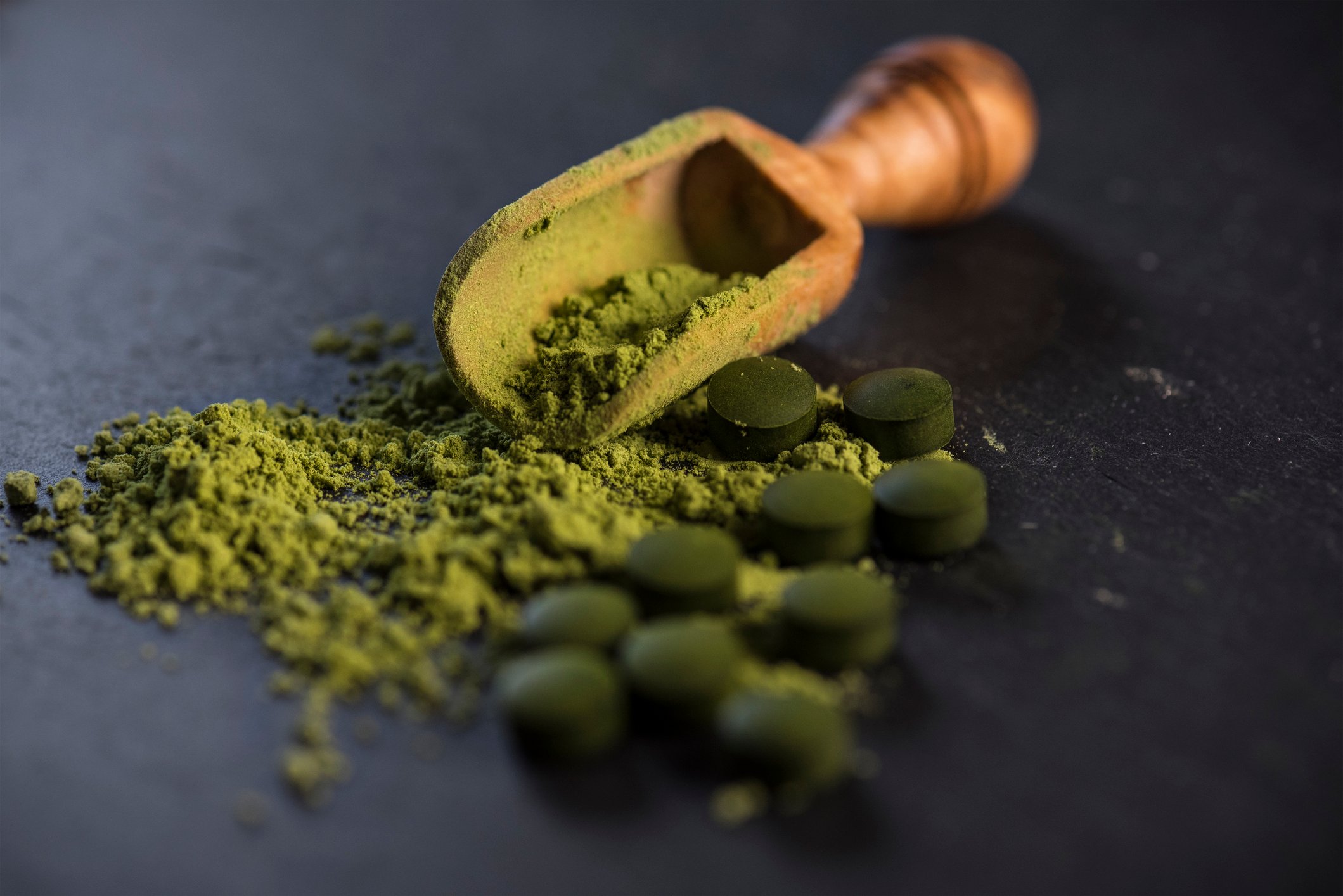Several studies in the area of chronic lymphocytic leukemia have attracted attention in recent years, most notably, of course, the CLL11 study, which demonstrated a clear benefit of the combination of chlorambucil plus GA101 in a comorbid population. PD Dr. med. Barbara Eichhorst from the University Hospital of Cologne took a close look at progress in the field of CLL and presented a review of research to date at the 5th SSHO in St. Gallen. She was particularly concerned with the relevance for concrete clinical practice.
(ag) Already in the CLL8 trial presented at the 2012 ASH Congress, FC (fludarabine, cyclophosphamide) plus rituximab showed significantly better overall survival than FC alone at a median observation time of 5.9 years. “In terms of progression-free survival, it was found that the so-called immunoglobulin HV (IGHV) mutation status was a key contributor to the success of the treatment. FCR provided an extremely good outcome within the group with mutated IGHV, with many of the participants still in remission after eight years on this therapy, which is close to a cure. In addition, however, it was equally surprising how strongly those patients with the unmutated form responded to the antibody. They achieved almost the same good results as those on FC and mutated IGHV,” explained PD Barbara Eichhorst, MD, Cologne, at the fifth Swiss Summit on Hemato-Oncology (SSHO) at the Cantonal Hospital St. Gallen. “The CLL10 study [1] investigated patients with untreated, active chronic lymphocytic leukemia (CLL) without del(17p) who had good physical fitness. The CIRS(“Cumulative Illness Rating Scale”) score was ≤ 6, and creatinine clearance was ≥ 70 ml/min. The purpose was to compare FCR with a combination of bendamustine and rituximab (BR) in the first-line setting. Regarding progression-free survival, the primary endpoint, there was a statistically relevant inferiority of BR compared to FCR (p=0.041). Although study participants were not selected for their IGHV mutation status, it presented as an independent prognostic factor for progression-free survival.

In terms of response and minimal residual disease (MRD), FCR also showed significantly better results. However, because more severe side effects such as neutropenia and infections also occurred with this therapy, no safe recommendation could be made at the time of the study regarding either regimen in the population of physically fit CLL patients.”
So how can first-line treatment be improved in these patients? “The answer is not simple. What is certain is that minimal residual disease is crucial for a positive prognosis at the end of therapy. High residual disease means a high risk of early recurrence,” Dr. Eichhorst said.
Comorbid CLL patients
The counterpart to the CLL10 study, which included only patients with a maximum CIRS score of 6 points and normal renal function, is the CLL11 study [2]. She studied a population of comorbid (CIRS >6) patients with creatinine clearance of <70 ml/min. This is consistent with the typical patient seen in clinical practice, as CLL occurs at a median older age where comorbidities are commonplace. Chlorambucil (Clb) was compared with the new CD20 antibody GA101 (obinutuzumab) plus Clb (GClb) and rituximab plus Clb (RClb) in stage 1, and the two antibodies were compared head-to-head (stage 2).
While the stage 1 analysis showed a clear advantage for the combination with antibodies (both rituximab and obinutuzumab), the stage 2 analysis demonstrated a highly significant prolonged progression-free survival and an improved complete remission rate under GClb compared to RClb. “Furthermore, it is particularly significant that MRD negativity (in blood and bone marrow) was achieved ten times more frequently with the new antibody than with RClb. As mentioned, this is crucial for the long-term outcome,” Dr. Eichhorst explained.
The Complement 1 trial [3] has a slightly different study design: it also compares a CD-20 monoclonal antibody, namely ofatumumab, as an adjunct to chlorambucil with chlorambucil alone (phase III). The study population consisted of previously untreated CLL patients who were not eligible for fludarabine-based therapy. With the antibody, improvements were seen in several clinically relevant outcomes, most notably progression-free survival (22.4 vs. 13.1 months, p<0.001).
Better and less toxic?
Recently, a phase III study [4] was published in the New England Journal of Medicine that caused quite a stir. She compared the inhibitor idelalisib (inhibitor of phosphoinositide 3-kinase[PI3K]-delta) in combination with rituximab with placebo plus rituximab in a sample of partially comorbid patients with relapsed CLL. The goal was to find a therapy that had an acceptable side effect profile for this sensitive population. “Indeed, there was a surprisingly large, highly significant difference in median progression-free survival and response, as well as other significant benefits in overall survival (p=0.02) in favor of rituximab plus idelalisib. Severe adverse events were more common with this combination than with rituximab plus placebo, to be sure. Nevertheless, the agent is likely to be approved in the U.S. in the near future, not least because of its surprising results in overall survival. Moreover, the data on ibrutinib are also encouraging, so there are several agents in the pipeline,” Dr. Eichhorst concluded.
Source: 5th Swiss Summit on Hemato-Oncology (SSHO), March 20, 2014, St. Gallen, Switzerland.
Literature:
- Eichhorst B, et al: Chemoimmunotherapy With Fludarabine (F), Cyclophosphamide (C), and Rituximab (R) (FCR) Versus Bendamustine and Rituximab (BR) In Previously Untreated and Physically Fit Patients (pts) With Advanced Chronic Lymphocytic Leukemia (CLL): Results Of a Planned Interim Analysis Of The CLL10 Trial, An International, Randomized Study Of The German CLL Study Group (GCLLSG). ASH Abstract #526.
- Goede V, et al: Head-To-Head Comparison Of Obinutuzumab (GA101) Plus Chlorambucil (Clb) Versus Rituximab Plus Clb In Patients With Chronic Lymphocytic Leukemia (CLL) And Co-Existing Medical Conditions (Comorbidities): Final Stage 2 Results Of The CLL11 Trial. ASH Abstract #6.
- Hillmen P, et al: Ofatumumab + Chlorambucil Versus Chlorambucil Alone In Patients With Untreated Chronic Lymphocytic Leukemia (CLL): Results Of The Phase III Study Complement 1 (OMB110911). ASH Abstract #528.
- Furman RR, et al: Idelalisib and rituximab in relapsed chronic lymphocytic leukemia. N Engl J Med 2014 Mar 13; 370(11): 997-1007. doi: 10.1056/NEJMoa1315226. Epub 2014 Jan 22.
InFo Oncology & Hematology 2014; 2(5): 28-29.











